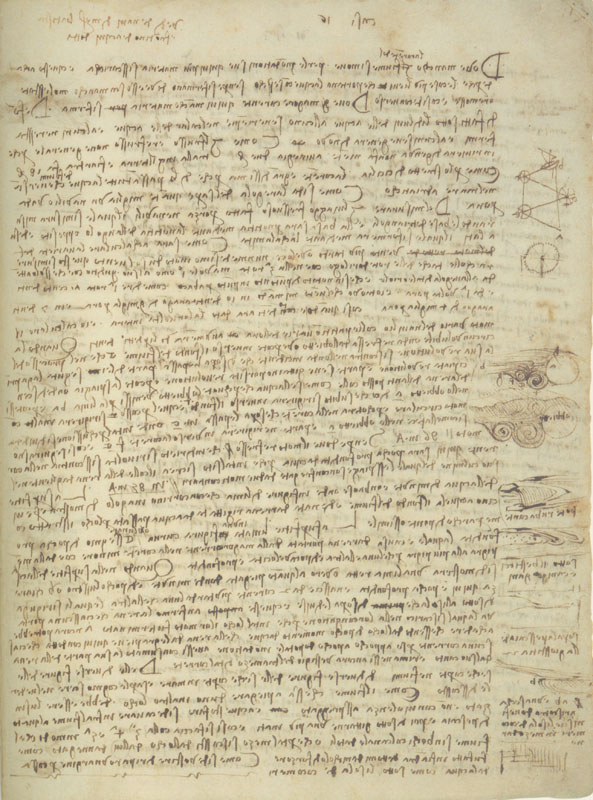
Codex Leicester, 13r. - Page with nine figures and eighteen propositions ("16 cases" pertaining to river currents, navigation, and the tides, with a memorandum added at the top on two books, the "De navi" by Leon Battista Alberti and the "De acqujdotti" (i.e., the "De aquis urbis Romae") by Sextus Julius Frontino. A system for facilitating the deviation of rivers is inspired by a method used in Flanders, reported to Leonardo da Niccolò by Forzore Spinelli (a goldsmith). The observations on the Arno, described in the figures, refer to the Florentine section of the river delineated by the Ponte Rubaconte (today's Ponte alle Grazie), Palazzo Bisticci and Palazzo Canigiani, the "della Giustizia" weir and the island of the Cocomeri "in the middle of the Arno".
© Alessandro Vezzosi
Last update 26/feb/2008


